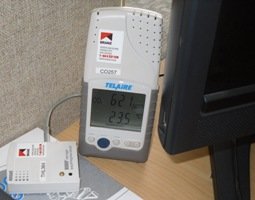The sample was too small to make useful breakdowns by business type or size, but there were patterns in the data.
The smaller shops were usually small suburban or provincial town shops, which often had no dedicated heating or HVAC system. Their energy consumption was usually very low (10-30 kWh/day). For these types of business, lighting was often the biggest end use and was often a high percentage of the total electricity consumption. One small shop had 97% of the electricity used for lighting. This proportion was verified - the shop had no hot water system, no heating and only a handful of small appliances.
Air-conditioning was present in only some premises. Some were central HVAC systems, but most were single or multi-split system heat pumps. Initial analysis showed the air-conditioning electricity consumption for the short periods monitored was highly variable, ranging from 1-58% of total electricity consumption.
Power point (plug load) electricity consumption from early monitoring ranged from 21-70% of total electricity consumption.
Hot water appeared to be a minor end use. For those premises where a hot water system existed and was monitored separately, the use was usually about 1-2% of the total. Some premises had hot water systems that were turned off or disconnected.
Computer server monitoring equipment allowed installation without interrupting power to the servers. However, some occupants preferred not to take the risk and asked for it not to be installed. This was particularly the case in early installations. There were no equipment-related issues with the computer servers during installation, monitoring or removal. A study of three servers found consumption ranging from 3.2-48.1 kWh/day. These were typical business-sized servers - one large server farm in a monitored BEES building consumed 160 kWh/day (~60,000 kWh per year) for one of two server rooms, excluding the room HVAC. These results suggested that server electricity consumption might be larger on average than hot water energy consumption in commercial buildings.
Temperature: A finding from the Household Energy End-use Project was that winter indoor temperatures in New Zealand houses were low and often poorly controlled. In the BEES premises monitored, the variation in indoor temperature profiles suggested random control of the internal temperatures. Most premises seemed to be left free-running after hours, and only a few showed evidence of being conditioned 24 hours a day to a controlled set-point temperature. It seemed many non-residential premises were not well controlled, possibly due to a lack of a centrally controlled HVAC system, insufficient capacity or poor control. The belief that non-residential buildings in New Zealand are operated to a well-controlled set-point and schedule does not reflect the actual operation of many buildings.
Patterns of lighting (lux) suggested that lighting was used mainly during the day and that light levels were reasonably stable throughout the day.
Humidity and CO₂ levels were also monitored.
